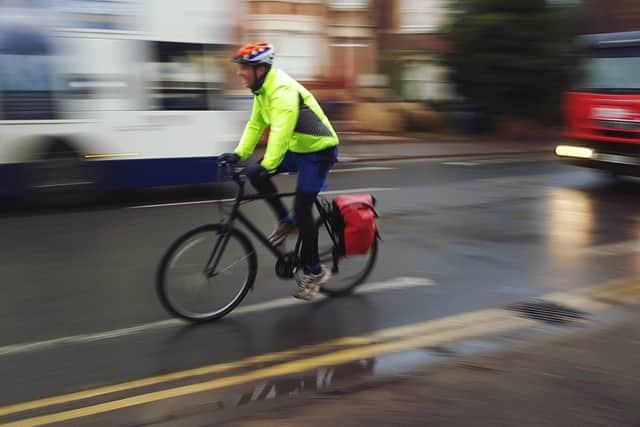Covid pandemic recovery sees fall off in number of Lancaster cyclists
and live on Freeview channel 276
The first coronavirus lockdown was characterised by shortages at bike shops and councils across England reorganising their streets to encourage walking and cycling.
But new figures from the Department of Transport shows the proportion of people regularly cycling has decreased compared to the year which marked the first lockdown.
Advertisement
Hide AdAdvertisement
Hide AdThe annual Active Lives Survey measures how often individuals exercise and is carried out continuously throughout the year.


According to the survey, 9% of adults in Lancaster biked at least once a week in the year to November 2021, down from 12% the year before.
This was also a drop from 14.1% in the year to November 2019, before the coronavirus pandemic.
Sustrans, a campaign group for better walking and cycling, said the figures show there is still a need to make active travel "safe, accessible, and welcoming".
Advertisement
Hide AdAdvertisement
Hide Ad"During the pandemic, when there were fewer cars on the road, the public took to their bikes,” said a spokesperson.
"It’s sad to see this return to expensive and pollutant car-use, especially as the urgency for alternatives has only increased, alongside the cost of living."
The National Travel Survey, also compiled by the Department for Transport, shows people in England on average drove 300 times in 2021, a rise on 295 the year before, but still far fewer than the 380 trips taken by car in 2019.
Edmund King, president of the AA motoring association, said the Government has missed a chance to better promote walking and cycling.
Advertisement
Hide AdAdvertisement
Hide Ad“The reversal of lockdown trends points to the Government and councils’ failure to seize the opportunity to ingrain and promote more of those changed behaviours into the way the UK travels,” he said.
A Department for Transport spokesperson said: “The Government is investing a record £2 billion over this Parliament to enable more walking, wheeling and cycling through better infrastructure, cycle training and active travel prescriptions.
“Though cycling levels have returned from the exceptional levels we saw during the pandemic, we remain fully confident our investment will enable many more people to choose walking and cycling for everyday journeys by 2030.”